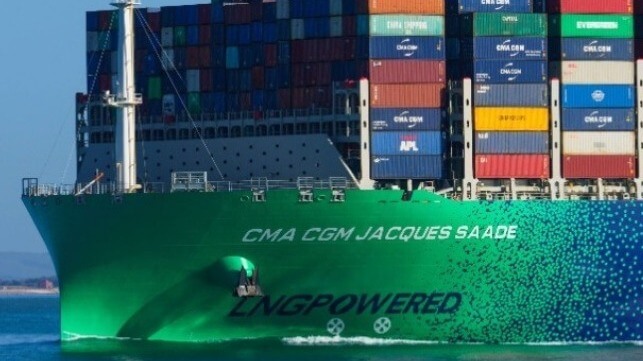SEA-LNG Highlights Growth of Bio-LNG Bunkering

SEA-LNG, the industry coalition established to demonstrate the commercial advantages of LNG as a marine fuel, is reporting strong growth in the availability of bio-LNG including in major bunkering ports. Growth of the alternative fuel is increasingly important both to support the expansion of the LNG-fueled fleet and to meet emerging regulations designed to reduce methane emissions as well as support the development of renewable fuels that do not compete with the production of food.
The European Council’s moves this week to complete the adoption of FuelEU Maritime due to become effective in 2025 highlight the critical need for bio-alternative fuels that meet the EU’s Renewable Energy Directive and requirements that fuels do not compete with food production. SEA-LNG reports that the current fleet of 355 LNG-fueled vessels, excluding LNG carriers, are all capable of using bio-LNG as a drop-in fuel without modification. DNV on its Alternative Fuels Insight platform estimates that the LNG-fueled global fleet with grown by 2.5 times in the next five years to nearly 1,000 ships.
SEA-LNG in its market analysis reports that annual production of biomethane, from which bio-LNG is produced, is currently around 30 million tonnes or around 10 percent of shipping’s total annual energy demand. Further, they report that bio-LNG is currently available in almost 70 ports worldwide, including in Singapore, Rotterdam, and the US East Coast. They highlight that bio-LNG can also be transported, stored, and bunkered in ports using the existing LNG infrastructure, which provides a route to further expansion of its availability in coming years.
“The fact that bio-LNG is commercially available now and being used as a drop-in marine fuel by operators in Europe, North America, and Asia, demonstrates the sustained contribution that the LNG pathway can make to decarbonizing our industry, starting today,” said Adi Aggarwal, General Manager of SEA-LNG. “Climate change is a stock and flow problem, the longer our industry waits to start using low-carbon fuels, the tougher the decarbonization challenge will be.”
Bio-LNG used in the maritime industry is produced from sustainable biomass feedstocks such as human or agricultural waste, which means it does not compete with the production of food, fiber, or fodder, as defined by regulations such as the EU’s RED II and the Renewable Fuel Standards in America. SEA-LNG highlights that in general, the use of bio-LNG as a marine fuel can reduce GHG emissions by up to 80 percent compared to marine diesel on a full well-to-wake basis. They further contend that depending on the method of production, bio-LNG can have net-zero or even net-negative GHG emissions on a lifecycle basis.

that matters most
Get the latest maritime news delivered to your inbox daily.
Environmentalists have been critical of the growth of the LNG fleet pointing to methane slip, the condition where unburnt methane which is especially harmful to the environment is contained in a ship’s exhaust. Global regulations, including an initiative from the UN Climate Summit, specifically are targeting methane slip at all sources from production to the use of LNG as a fuel source. SEA-LNG argues that newer marine engines and technologies are reducing methane slip while additional research is also underway to eliminate methane emissions from ship’s exhausts.
SEA-LNG also addresses the challenge of scaling up bio-methane production to meet demand. The industry coalition cites research from the Nanyang Technological University’s Maritime Energy and Sustainable Development Centre of Excellence (MESD) released in October 2022, showing the global potential for the expansion of biomethane production of up to 20 times current production levels by 2050. Accounting for demand for other sectors, MESD forecasts that bio-LNG as a marine fuel could be available in sufficient quantity to decarbonize approximately 13 percent of the global shipping fleet in 2050.
